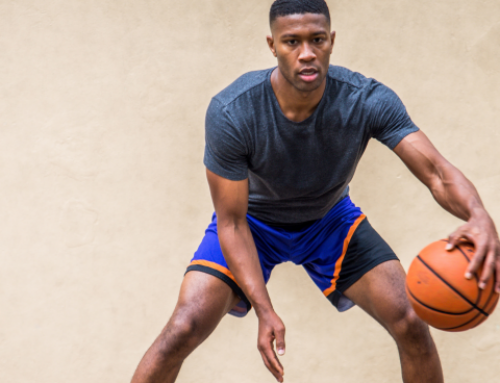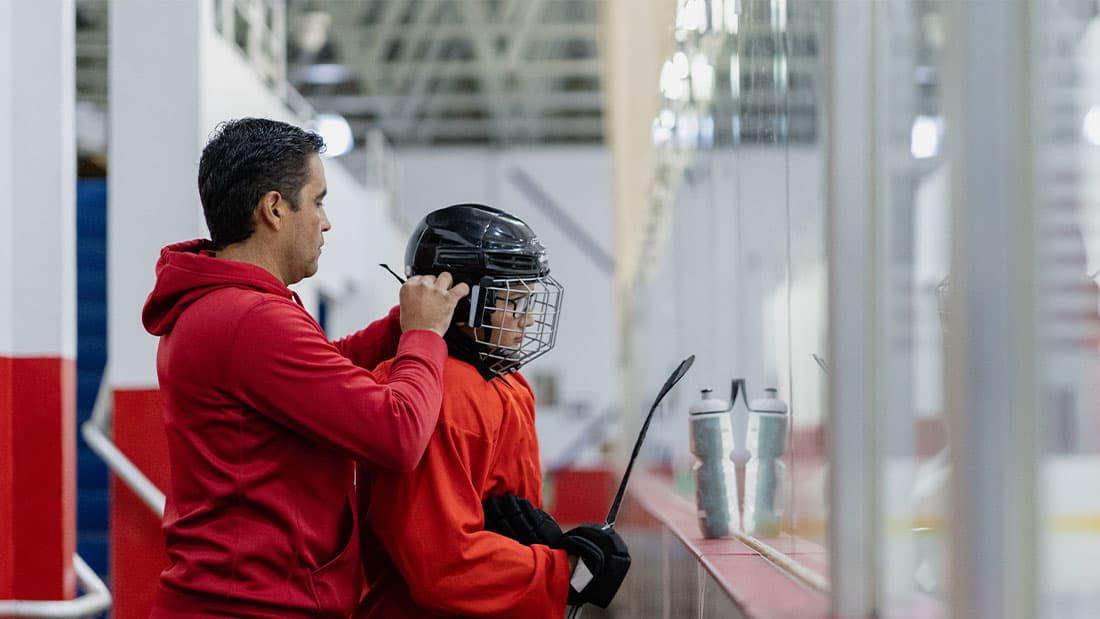Improve Your Crossover Step to Become a More Explosive Basketball Player
If you’re a basketball player and you’re not working on your crossover step, you’re missing out.
A crossover step simply refers to “crossing” one leg across the other to cover ground laterally. A slow crossover step won’t do you much good, but an explosive one can add another weapon to your offensive game while also giving you a tool to quickly cover ground on defense.
An explosive crossover step allows you to cover more space more quickly, which is an obvious advantage on the court. These are just three examples of how a fast, efficient crossover step can benefit you during a game:
- It’s a last-second play, and you need to get a shot off quickly. A crossover step can help you create separation in an instant.
- You’re in the paint and a defender is stuck on you. A crossover step can help you create space and get open.
- You’re on defense and your man just beat you to the spot where he likes to spot up. A crossover step can help you cover ground quickly and get back into position with control.
So, what goes into a great crossover step? You want your crossover step to be both long and efficient. It’s about covering a large amount of ground quickly while also staying in an explosive position. Below are some of the fundamentals of a great crossover step:
- Arm work. Your arms pulling in the opposite direction of the step with your wrists relaxed will help you move efficiently.
- Hip rotation. Turning your hips as much as possible in the direction of your step can make the movement more explosive.
- Push the ground. If you want to take a quick step, you’re going to need to exert explosive force into the ground to propel yourself forward. You want both feet planted on the floor and pushing off to create maximum ground force and stability.
- Core strength. Maintaining an upright posture and keeping your glutes engaged during the movement are a must.
- Force absorption. Once you take the step, you need to land efficiently and in control. You can’t let your upper half continue to move laterally.
Training your crossover step is not about endurance. You’re looking for explosiveness, so performing three sets of 3-5 steps on each side should suffice. However, if you’re seeing your explosiveness decrease with each step before you reach those numbers, it’s time to stop. You can gradually work up to that number.
I am a huge believer in progressions, and the crossover step is no exception. Below are examples of progressions that I use with my players.
- 1. One regular crossover step.
- 2. Two crossover steps in the same direction (right-right, left-left).
- 3. Two crossover steps with change of direction (examples, left-right or right-left).
- 4. Movement into crossover step (movements can include jab forward, jab to the side, drop-step, countermovement med ball slam, depth landing, etc).
- 5. Crossover with a movement after landing (jab forward, vertical jump, broad jump, etc.).
You can also train to build a more explosive and stable crossover step in the weight room. Here are some examples of movements that translate to a more explosive crossover step:
And here are a couple of examples of how you can progress your crossover step training:
The goals of both the on-court and the weight room crossover step training are simple:
- To increase space covered with each step.
- To have more controlled stops after explosive movements.
- To be able to produce maximal force as fast and efficiently as possible after landing or planting the feet after any jabs or defensive slides.
I’ve found including a light amount of crossover step training in-season is beneficial for a number of reasons. Performing 6-12 jumps total before the performance (be it practice or a game) wakes up the central nervous system and primes the body for the work it will be doing. It also allows you to own the movement and improve it step by step over a long period of time. And finally, it reminds you of how much space an efficient, explosive crossover step can create, making you more likely to use it in-game situations.
RECOMMENDED FOR YOU
MOST POPULAR
Improve Your Crossover Step to Become a More Explosive Basketball Player
If you’re a basketball player and you’re not working on your crossover step, you’re missing out.
A crossover step simply refers to “crossing” one leg across the other to cover ground laterally. A slow crossover step won’t do you much good, but an explosive one can add another weapon to your offensive game while also giving you a tool to quickly cover ground on defense.
An explosive crossover step allows you to cover more space more quickly, which is an obvious advantage on the court. These are just three examples of how a fast, efficient crossover step can benefit you during a game:
- It’s a last-second play, and you need to get a shot off quickly. A crossover step can help you create separation in an instant.
- You’re in the paint and a defender is stuck on you. A crossover step can help you create space and get open.
- You’re on defense and your man just beat you to the spot where he likes to spot up. A crossover step can help you cover ground quickly and get back into position with control.
So, what goes into a great crossover step? You want your crossover step to be both long and efficient. It’s about covering a large amount of ground quickly while also staying in an explosive position. Below are some of the fundamentals of a great crossover step:
- Arm work. Your arms pulling in the opposite direction of the step with your wrists relaxed will help you move efficiently.
- Hip rotation. Turning your hips as much as possible in the direction of your step can make the movement more explosive.
- Push the ground. If you want to take a quick step, you’re going to need to exert explosive force into the ground to propel yourself forward. You want both feet planted on the floor and pushing off to create maximum ground force and stability.
- Core strength. Maintaining an upright posture and keeping your glutes engaged during the movement are a must.
- Force absorption. Once you take the step, you need to land efficiently and in control. You can’t let your upper half continue to move laterally.
Training your crossover step is not about endurance. You’re looking for explosiveness, so performing three sets of 3-5 steps on each side should suffice. However, if you’re seeing your explosiveness decrease with each step before you reach those numbers, it’s time to stop. You can gradually work up to that number.
I am a huge believer in progressions, and the crossover step is no exception. Below are examples of progressions that I use with my players.
- 1. One regular crossover step.
- 2. Two crossover steps in the same direction (right-right, left-left).
- 3. Two crossover steps with change of direction (examples, left-right or right-left).
- 4. Movement into crossover step (movements can include jab forward, jab to the side, drop-step, countermovement med ball slam, depth landing, etc).
- 5. Crossover with a movement after landing (jab forward, vertical jump, broad jump, etc.).
You can also train to build a more explosive and stable crossover step in the weight room. Here are some examples of movements that translate to a more explosive crossover step:
And here are a couple of examples of how you can progress your crossover step training:
The goals of both the on-court and the weight room crossover step training are simple:
- To increase space covered with each step.
- To have more controlled stops after explosive movements.
- To be able to produce maximal force as fast and efficiently as possible after landing or planting the feet after any jabs or defensive slides.
I’ve found including a light amount of crossover step training in-season is beneficial for a number of reasons. Performing 6-12 jumps total before the performance (be it practice or a game) wakes up the central nervous system and primes the body for the work it will be doing. It also allows you to own the movement and improve it step by step over a long period of time. And finally, it reminds you of how much space an efficient, explosive crossover step can create, making you more likely to use it in-game situations.










